Belonging to the northern mountainous region of Vietnam, Cao Bang features a pleasant temperate climate, with forests, mountains, rivers, and streams that span over the horizon. The raw natural scenes together with the fascinating historical sites should be more than enough to make this province a major tourism destination. But it is not, at this very moment. So why hesitate? After this two-day itinerary and our in-depth guides, you will not even think twice about making a trip to Cao Bang, for sure!

Briefly about See & Do in Cao Bang
Generally, Cao Bang is extremely suitable for those who enjoy leisure and sightseeing trips with a bit of adventure, if you possess your own motorbike. Pack lightly, and ride through the mountains, along the rivers, enjoy a relaxing picnic by a picturesque lake, or just hike through the jungles and hills to discover a magnificent waterfall. In fact, the northern area of Cao Bang is recognized by UNESCO as a global geopark, you can start dreaming by having a glimpse at this Youtube video.
In addition, history buffs will enjoy the sites where the Vietnamese National Liberation Front was formed and organized, contributing to legendary battles of the Vietnam War. There are even ethnic villages with traditional craftsmanship and interesting stories that you should sink some time into, just see the place, the people and learn something new in life. But this article will be dedicated to the natural and historical attractions of Cao Bang only, just to make sure that you get the most unique experiences in a reasonable two-day time frame.
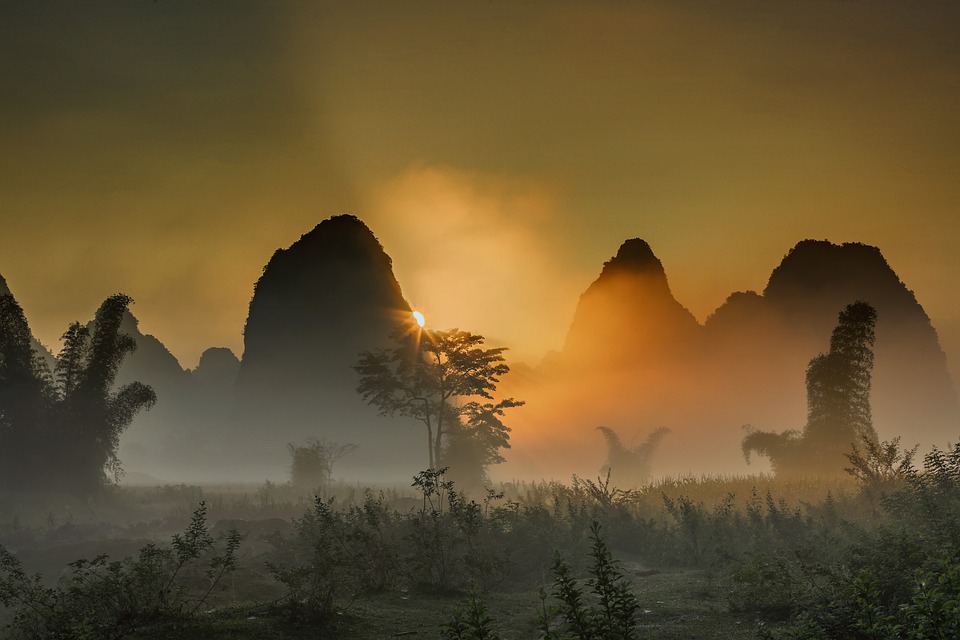
The cultural aspects of Cao Bang are self-exploratory and there are unlimited ways to dive into its culturally rich ethnography. Take a look at Sal’s article to learn a little bit about the Tay people.
Since research is always daunting and the amount of information sometimes comes in one big package, you might get a bit lost in learning about Cao Bang before making your move. In order to help you make the most of your trip, our writers have crafted a bundle of comprehensive guides about every aspect of Cao Bang. Just check them out briefly before moving on.
Autumn: The Best Season to Visit Cao Bang
Visit The Tay People And Understand Their Culture: A Cao Bang Adventure
Ban Gioc Waterfalls & Nguom Ngao Cave – A Precious Gift From Mother Nature
Once you are ready, let’s get started with the trip!
Pro Tip: You should settle down in Cao Bang for one night before the adventure starts in order to experience everything hassle-free during your next two days.
Day 1 – Into the Wild – Waterfall, Cave, Lake and More
Itinerary: Cao Bang City – Ban Gioc Waterfall – Nguom Ngao Cave – Thang Hen Lake – Tuyet Tinh Coc (The Valley of Secluded Love) – Cao Bang City
Distance traveling: Approx. 200 kilometers
Estimated travel time: 5 hours
Overall Journey on Google Maps: Click here!
Getting Started
On this very first day of the Cao Bang trip, you should start early in the morning, at around 6 AM, in order to enjoy the sight-seeing a bit more during the day due to the long traveling distance. In the middle of the day trip, Thang Hen Lake is a perfect place for a picnic, so I recommend preparing for that and taking a bit of a break to relax.
From 6 – 8 AM, have a stroll around the streets of Cao Bang city and the Central Market to have a light breakfast, maybe try a local banh mi or banh cuon (steamed savory rice rolls). Then it is a good idea to start gathering fruit, bread, ham and cheese or anything you desire for an afternoon tea time at the Thang Hen Lake picnic site.

It is around 90 kilometers or 2 hours from Cao Bang to our first destination – Ban Gioc Waterfall. Arrive here at about 10 – 10:30 AM. This is the perfect time to start, letting you have a comfortable time in each location and you will return before dark. Therefore, from now on, it depends on how you would like to spend your time in each destination, since all of these options are purely for sightseeing.
Ban Gioc Waterfall – The Most Magnificent Waterfall of South-East Asia
Distance from Cao Bang: 90 kilometers
Estimated travel time: 2 hours
Resembling a huge silky white curtain in the middle of the Northeastern Mountainous Area, Ban Gioc Waterfall is renowned as the most beautiful waterfall in Vietnam, the biggest in Southeast Asia and the fourth largest waterfall that spans along a national border – after the world-famous Iguazu Falls, Victoria Falls, and Niagara Falls.
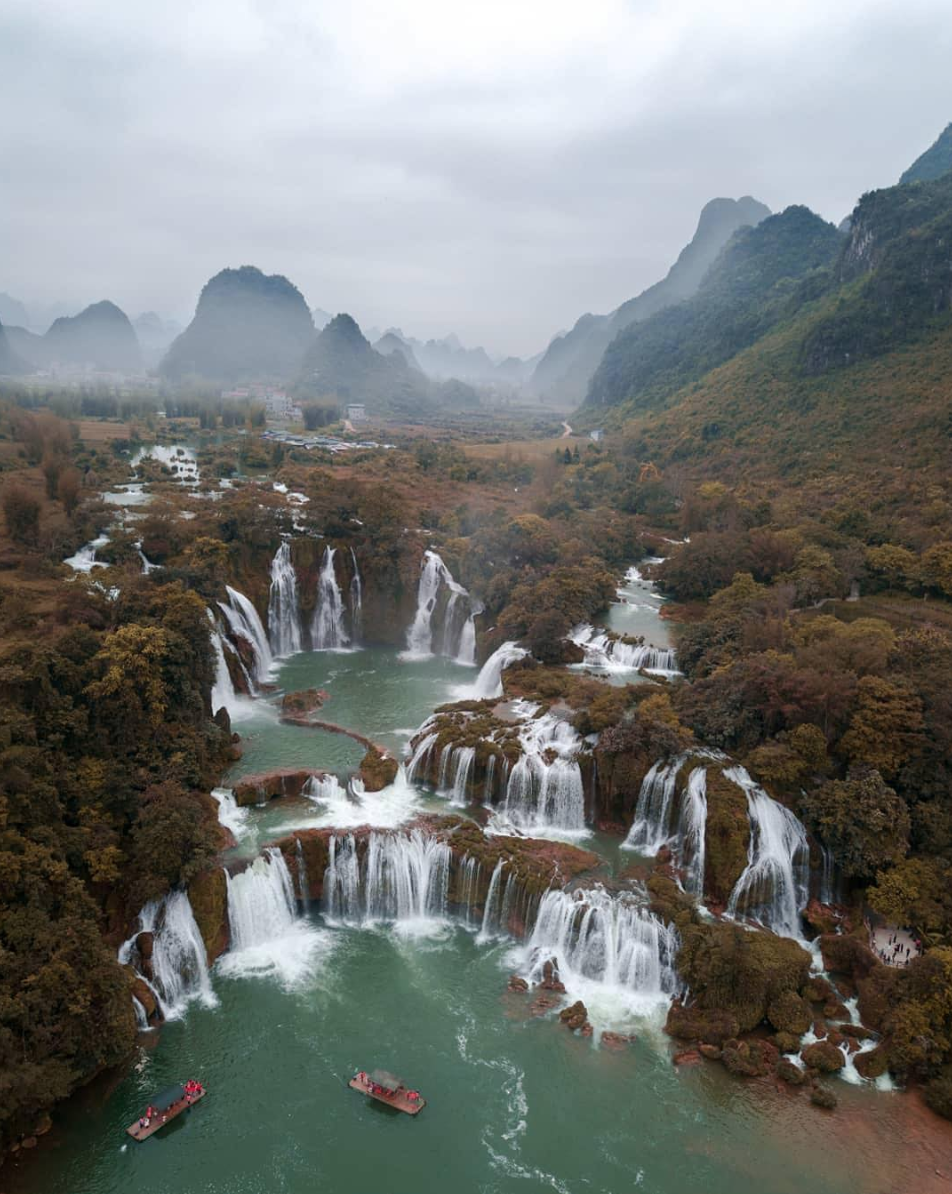
Ban Gioc Waterfall is 100 feet in height, with multiple steps, and right behind it are the lush terraced rice fields of Daxin Province, China. I highly recommend utilizing a high-powered camera or a flycam to capture the whole magnificent sight of the waterfall. There, you can also take a boat trip along the streams and below the falls to catch a breeze of the falling spring water.
Additional point of interest: Phat Tich Truc Lam Pagoda of Ban Gioc
This pagoda is located on Phia Nham mountain just 500 meters to the southwest of the waterfall. Apart from the grandiose views of the surroundings once you set foot here, the beauty of the pagoda will surely hold you still for some time. Phat Tich Truc Lam Pagoda boasts overall pure traditional Vietnamese architecture, from the Three-Entrance Gate, bell tower, drum tower, stone tablets and many more for you to explore.
Once you are done with the falls and the pagoda, our next destination is only four kilometers away – Nguom Ngao Cave – a natural treasure of Cao Bang borderland.
Nguom Ngao Cave – A Golden Labyrinth from Mother Nature
Distance from Ban Gioc Waterfall: 4 kilometers
Estimated travel time: 10 minutes
Just a few-minutes ride from the Ban Gioc Waterfall, you will be attracted by the mysterious allure of Nguom Ngao Cave. This cave is listed among the most beautiful caves in Vietnam for its miraculous stalagmite towers, curtains, and crystalline flowers.
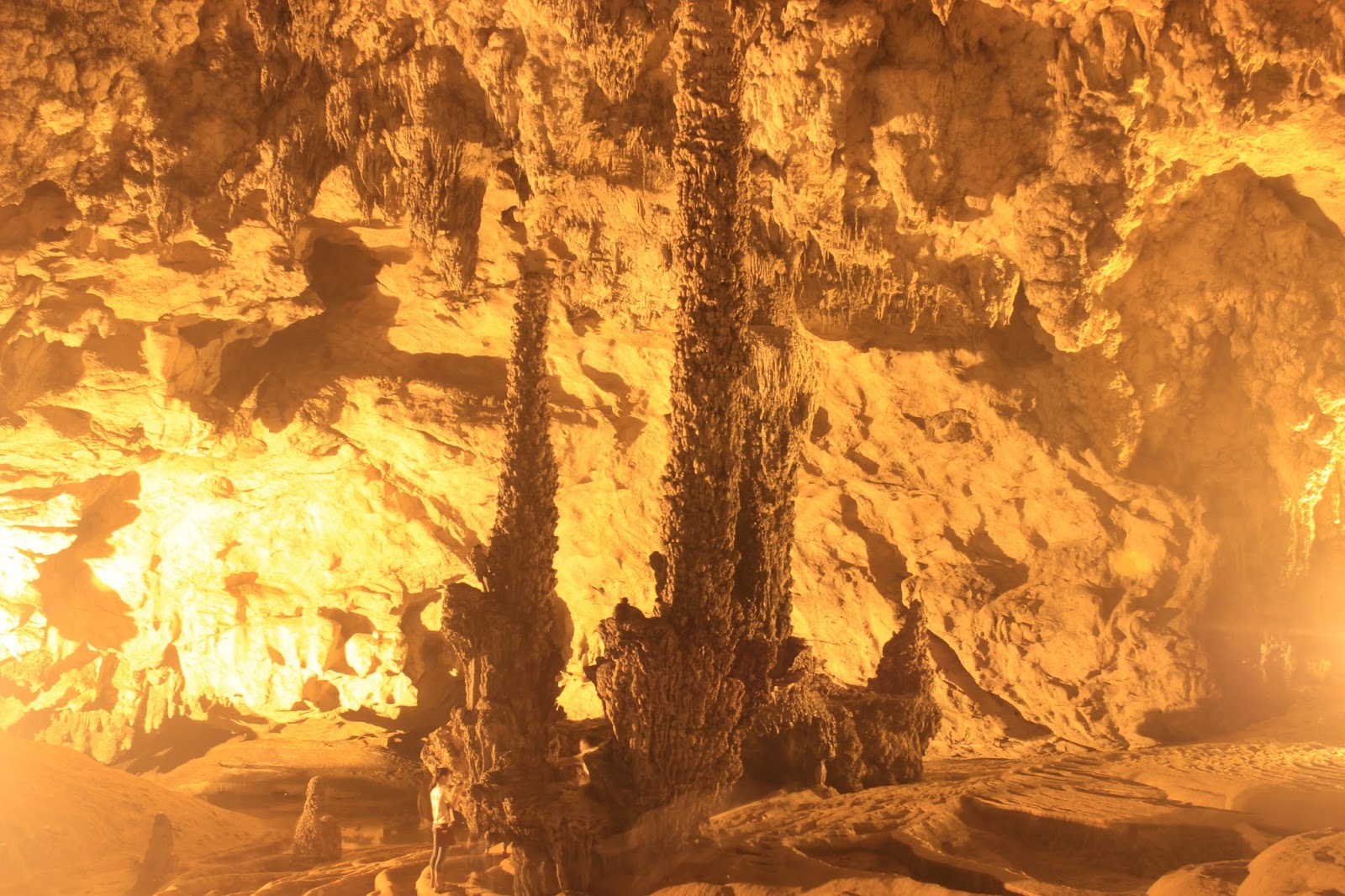
If you are into mythology, Norse mythology in particular, this is where your imagination of the Dark Elves’ dwelling will be fulfilled. The whole place looks more and more fascinating and magical the deeper you crawl in. A sufficient lightning system also helps with exploration. Light up every hidden structure and encrust the maze with golden color.
The whole cave is mostly accessible with a concrete pathway spanning two kilometers, from the Nguom Lom entrance to the Nguom Ngao exit. The middle has no man-made path, which may require you to scramble and climb. Things get even more adventurous since the cave expands right where the walkway is interrupted. Overall, you are going to spend around one hour exploring the cave.
When you happen to see the light at the end of the labyrinth, it should be around noon time. Grab some quick bites for energy before heading to our desired picnic place at Thang Hen Lake – where the sky and the mountains harmonize in an emerald-plated mirror.
Since the Ban Gioc Waterfall and the Nguom Ngao Cave are two of the major attractions in Cao Bang, we also cover them in even more detail here in this article.
Thang Hen Lake – A Sight Coming Straight from a Traditional Asian Painting
Distance from Nguom Ngao Cave: 70 kilometers
Estimated travel time: 1 hour 40 minutes
Thang Hen Lake is a still lake located 1,000 meters above sea level, which will serve as our second to last destination before heading back to Cao Bang city. Travelers describe the place as the Shangri-La of Northern Vietnam – an emerald-colored lake in the middle of vast mountain ranges, surrounded by beds of green grass covered by a clear sky.
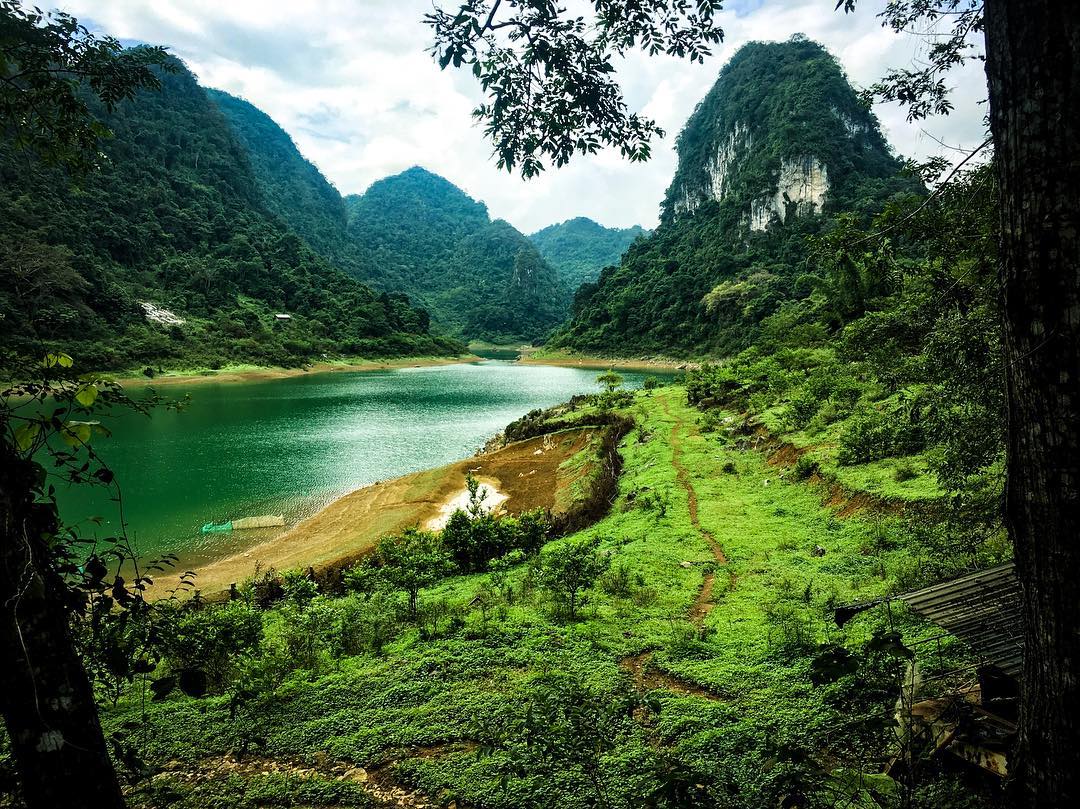
Words cannot do this lake justice. Just take a moment, find a nice place under the shade of a big tree, enjoy a feast and take a brief nap under the fresh air, probably one of the most relaxing hours of a whole life to come. You can spot some local livestock and wildlife such as horses, goats and birds peacefully enjoying their time there also.
After you’re refreshed and well-rested, I will bring you to the last fascinating destination that will surely capture your heart – Tuyet Tinh Coc – The Valley of Secluded Love.
Tuyet Tinh Coc – Romance Lovers’ Desired Hidden Destination
Distance from Thang Hen Lake: 11 kilometers
Estimated travel time: 25 minutes
Tuyet Tinh Coc – The Valley of Secluded Love. This name may sound a bit misguided at first, as many people think of bad omens. But you would be wrong to think this, the name actually comes from Vietnamese pop culture in a Chinese novel called “The Return of Condor Heroes” about romance and martial arts. In the novel, Tuyet Tinh Coc is a heavenly beautiful place on Earth where the main couple spent their last moments together before embarking on their own adventures. They finally met again 16 years later, at the very same place, at the moment the male character decided to commit suicide, as he could not continue to live on his own for the rest of his life without her. It is a place where love departs, just to be united again eternally after.
Nowadays, Vietnamese travelers use “Tuyet Tinh Coc” as a reference to name those secret, isolated places which are literally heaven on Earth, while the original story does not really matter at all. Do not worry if you are a happy couple. On the other hand, you will only get one-of-a-kind photos and moments here. And there are plenty of them in Vietnam, in Cao Bang, Hai Phong, Ninh Binh, Da Lat, and An Giang. I am going to take you to the top places on the list.
This valley is totally surrounded by mountain ranges, and there is only one way to actually get here. You must walk. You will pass through an ethnic village, wildflower fields and blooming beds of grass, stumbling across a one-eyed mountain adjacent to a quiet lake and finally making it to a hidden waterfall at the end of the journey. Just take your time and let your soul immerse in this heaven of pristine natural sights. Please be mindful not to disturb the wild life, as they are there for the same reason as you, enjoying a moment of pure beauty.

Remember to take a photo of the sun descending on your way back, especially when the fiery sphere perfectly fits into the magical eye hole of the mountain. I haven’t seen anything like it yet. Something magical may happen, who knows?
This marks the end of your first day in Cao Bang, seeing the beautiful natural attractions of the province. It has also been a long day, so maybe grab a beer or two for a peaceful night and relax, as the adventure just began.
Back to Cao Bang for the Night
Distance to Cao Bang: 32 kilometers
Estimated travel time: 1 hour
For dinner, I recommend getting any of the tasty local specialties of Cao Bang, which are all reviewed here by Mr. Panda. Unlike our other itineraries about other major cities, which emphasize what to eat and do in the evening, this one will let you decide for yourself. There are not many places to go out, so sit back and relax. Just enjoy the silence before you return to Vietnam’s big metropolises.
Day 2 – Jump back in Time – Relics of Cao Bang’s History
After racing around yesterday from dawn to dusk, you probably want to take it easy today. On this day I advise having a big breakfast like a hot bowl of pho and also prepare small bites and water along the way as well.
Okay! Once you’re freshened up for the morning, let’s start with a tasty fulfilling soup for breakfast and hit the road.
Itinerary: Cao Bang City – Na Lu Ancient Citadel – Pac Bo Historical Site – Kim Dong’s Memorial – Phia Den-Phia Oac Natural Park – Cao Bang City
Distance traveling: approx. 120 kilometers
Estimated traveling time: 3.5 hours
Overall Journey on Google Maps
For timing and energy allocation, Pac Bo Historical Site will require a bit of hiking and climbing, Phia Den – Phia Oac is going to be a walk in a forest and the rest won’t take more than an hour. So just spend as much time as you would like enjoying these places.
Na Lu Ancient Citadel – The Still-Standing Witness of Swords and Sandals
Our first destination of the day will take you through the Middle Ages of Vietnam, from the third century to the year of 1682 – the Na Lu Ancient Citadel.
The citadel was initially built with clay in 265 during the Qin Dynasty and was then reinforced in 866 together with the construction of other citadels: Dai La, Phuc Hoa, and Lang Son. During the reign of Emperor Ly Thai Tong (1048 – 1055), this area was utilized as a major military training ground. Throughout the course of history, the raging wars have destroyed the whole citadel to smithereens.

In 1682, during the Later Le Dynasty, part of the former citadel was reconstructed to become their ancestor worshipping place – the still-standing Le Emperor’s Temple that we have today. There are still remains of the Ancient Citadel scattered around, including the ruins of the eastern gate, the foundation of the citadel, an old limestone kiln, the ammo dump and something that seems to be the floor of the palace.
In present days, the Na Lu Ancient Citadel and the Le Emperor’s Temple are considered an invaluable relic of Vietnam’s Middle Ages. The site is also a venue of local festivals, cultural activities, and art performances of the people of Cao Bang. A yearly festival is organized on the sixth of Lunar January, attracting a lot of locals and people from neighboring provinces.
Distance from Cao Bang: 12 kilometers
Estimated travel time: 30 minutes
Additional points of interest: De Doong Temple
Just 10 kilometers along the way to the next destination, there is an interesting historical relic from the 15th century that is worth a visit called De Doong Temple.
This temple was built in 1429. According to the local people, this was a sanctuary to worship the god of stone and river, and later Buddha and the Godly Mothers joined the altar. There is also a festival on the 15th of Lunar January every year. Rituals are performed on the 14th, offering a giant roasted pig, a huge tray of boiled chicken, sticky rice and plenty of fruits to the gods. Then on the 15th comes a banquet and cultural activities with many folk traditional games. This is also the time when people wish for blessings and good fortune for the rest of the year.
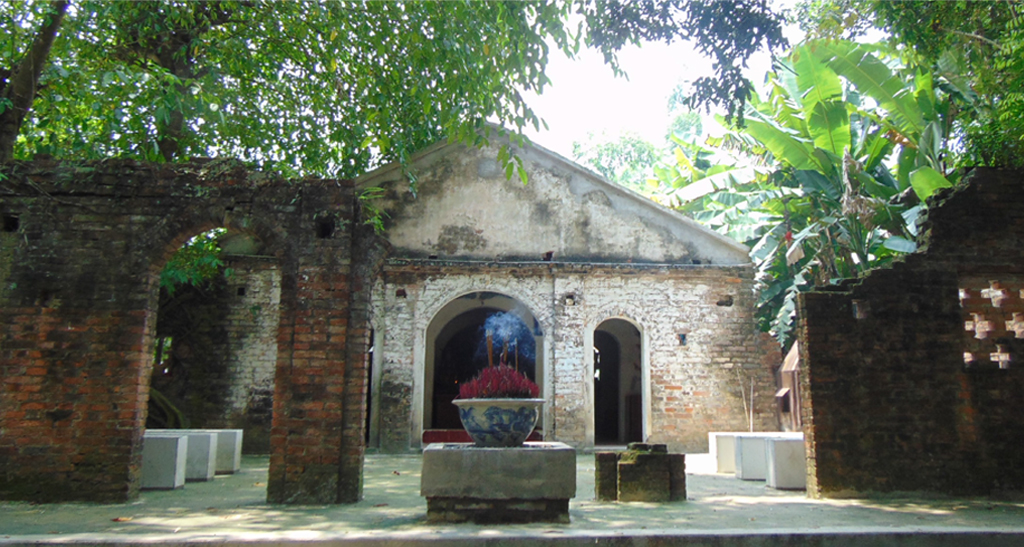
Make sure to get some ice-cold local drinks before continuing on! The main star of the adventure is coming up next – the Pac Bo Historical Complex.
Pac Bo Historical Complex – The Spark of the Revolution for Independence
Distance from De Doong Temple: 38 kilometers
Estimated travel time: 1 hour
Pac Bo historical complex is located in Truong Ha Commune, Ha Quang District, Cao Bang Province, bordering China. “Pac Bo” in Tay language means headwaters. You should try water directly from the Lenin stream when exploring the region. It has to be the purest and best-tasting mineral water that you have ever had in you life, with the blessing of glorious communism.
Moreover, Pac Bo is also a place of utmost importance for national revolutionary communist history of Vietnam, particularly in the War for Independence against French Colonialism. The movements took place during 1941 to 1945, after Nguyen Tat Thanh’s (later Ho Chi Minh) 30 years of working around the world and fighting for Vietnamese Civil Rights under the brutal French Colonialism.
There, Ho Chi Minh opened courses for politics and military strategies for revolutionary cadres of Cao Bang. It was also in Pac Bo that he started publishing communist documents translated directly from Russian.

In general, Pac Bo includes many attractions such as Uncle Ho Memorial House, Coc Po Cave, Lung Lan Cave, Ngum Vai Cave, Lenin Stream, Ly Quoc Sung’s House, La Thanh’s house etc. Among these, the Lenin Stream, Coc Po cave and Karl Max Mountain are three main places that you should not ignore.
Lenin Stream
While being historically significant, the Lenin stream does not seem to get much attention from younger tourists who are most likely more passionate for the adventurous destinations. However, the stream rewards those who come with beautiful sapphire-colored water, breathtaking natural sights, and the ultimate breeze of peace.
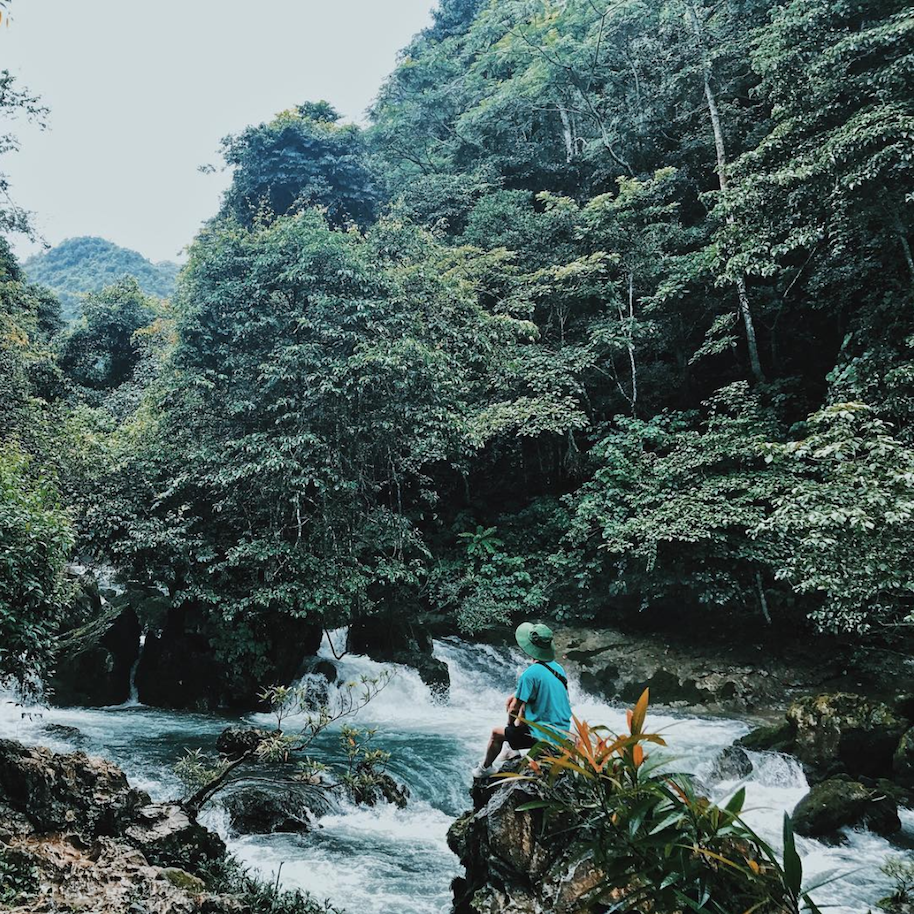
Following the Lenin stream upwards, you can visit many vestiges of Pac Bo such as Coc Bo cave – where Ho Chi Minh lived and worked, Bo Bam Cave, Karl Marx Mountain, Nam Stream, Khuoi Nam Hall, the stone table where the revolutionary meetings were held, etc. It is such a poetic harmony of man and nature, even without the historical aspects. I am sure that the Lenin stream surroundings will allow you an escape from the modern world.
Coc Bo Cave and Karl Marx Mountain
Coc Bo Cave (in Nung language, Coc Bo means headwaters) is located on the side of a mountain, on the bank of Lenin stream, sheltering Uncle Ho and the commissars under the protection of Pac Bo natural fort. The hideout also has a narrow escape crossing the border to China, for a safe retreat if exposed. Inside, Ho Chi Minh carved on the wall “February 8th, 1941”, recording the day that he first moved in. It was a dark, damp, narrow and chilling place deep in the ravine of Karl Marx Mountain that was not easily found back in the day.
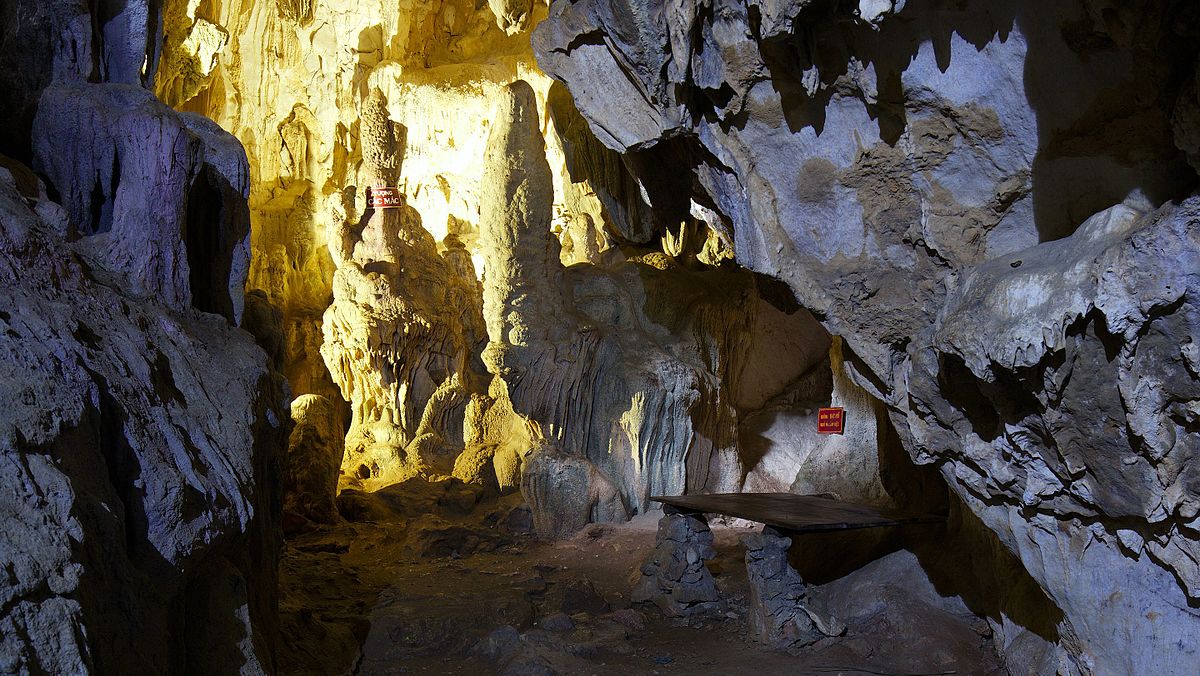
In the cave remains an old cracked wooden plank, where Ho Chi Minh used to sleep and work. Advance deeper inside, and you will see a statue of Karl Marx naturally and magically made from stalactite. The cave stayed intact until the year 1979 – the Chinese – Vietnamese Border War, when the Chinese invading troops blasted it away with explosives. Then, Coc Po was partially restored for tourism purposes.
The mountain that contains Coc Bo Cave was named Karl Marx. Together with the Lenin stream, they served as a memorial to Ho Chi Minh’s most influential ideologists. Throughout the years of war and revolutions, the natural sights of these relics have remained. Karl Marx is still standing there, next to the ever-flowing crystal clear stream of Lenin. Coc Bo Cave still remains the essence of the Great Vietnamese Uncle, and is surrounded by many of his relics – the rock where Ho Chi Minh sat and fished for relieving stress and the stone table marking the history of Vietnam’s Communist Party.
After spending a hefty time exploring the whole Pac Bo historical site and learning the stories of Vietnamese most beloved father – Uncle Ho and his journey for the nation’s independence, it is time to turn around and head back to Cao Bang. But this is not the end of the day yet, there are still two more destinations that you should visit! Grab some quick munchies and carry on.
Kim Dong’s Memorial
Distance from Pac Bo Historical Site: 5.5 kilometers
Estimated travel time: 10 minutes
Kim Dong (actual name Nong Van Den) was born in 1929. He was the leader of the Revolutionary Youngster Team during the Resistance War against the French. He sacrificed himself to protect other comrades at the age of 14 on the 15th of February, 1943 during a French Search-and-Destroy.
The Party and the State awarded Kim Dong the title of Fallen Patriotic Hero in 1997 and this memorial was built, including his tomb and the grand monument to him, backed by a large rocky mountain range and surrounded by blooming forest.

Kim Dong’s monument consists of a statue of him wearing Nung’s traditional clothes and raising his hand with a communicating pigeon, symbolizing the Vietnamese children’s desire for peace. In front of the statue there is a huge playground where you can observe local children having fun.
Phia Oac – Phia Den Natural Reserve
Distance from Kim Dong’s Memorial: 21 kilometers
Estimated travel time: 35 minutes
Phia Oac – Phia Den Nature Reserve, is a reserved forest with a total area of 10,245.6 hectares spanning across the Nguyen Binh district of Cao Bang province. The forest was utilized by the French in the early 20th century for summer resorts. The Phia Ooc – Phia Den area is home to a vast variety of fauna and flora species, especially rare and endangered butterflies.
According to available records, the old villas in the forest were built in the early nineteenth century. At this time, the French colonialists boosted their mining operations in Tĩnh Túc and pushed thousands of workers from all over to exploit labor for digging ore, and scooping resources.
In order to oversee the large number of workers, France dispatched troops to garrison and build high-end resorts for on-site officers and soldiers. The old abandoned villa complex became the resort of French officers. In the middle of Phia Oac mountain range there are two main types of houses: independent villas for senior French officials and the adjacent villas are for soldiers and junior officials. Most are abandoned and forgotten by time, waiting to be discovered by you!

Phia Den – Phia Oac concludes your two-day adventure of Cao Bang, and now it’s time to come back for a hot shower, get a nice rest and recap your experience so far. But this is just 75% of the Cao Bang bucket list! There should be a handful of local dishes that you haven’t tried yet, so let’s check back to this article once again for another night in Cao Bang and tick the to-do boxes. And if you still want to see even more and dig even deeper, Sal will continue to guide you through an extra day hanging out with locals, make sure to check this out.
Distance to Cao Bang: 32 kilometers
Estimated travel time: 1 hour